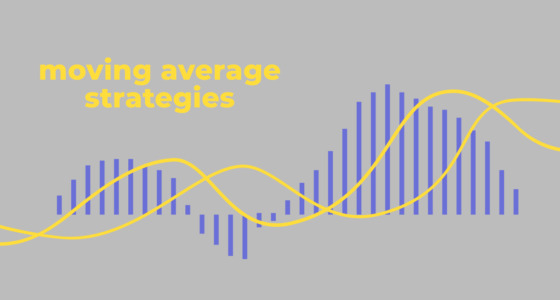

Every investor, from beginner to professional, has something in common — namely, the need for a well-built trading strategy.
Surprisingly, numerous scientific studies have shown that passive investors have the highest returns. Active players constantly making transactions in the market lose much to them in terms of profit. But what is the reason for such success? This is what will be discussed in today’s article.
What is a trading strategy?
A trading strategy is a pre-built plan of action that a trader will follow while dealing with assets in financial markets.
The right strategy carries things like:
- Certainty. Despite the dynamism and volatility of the markets, the strategy helps to maintain some stability. As a trader, you understand where and why you are moving, as well as your ultimate goal.
- Rationality. Often, novice investors succumb to emotions when making decisions, which negatively affects their assets and activities in general. A good strategy will prevent them from panicking and taking rash actions.
- Effective time management. The main thing when creating a trading strategy is to automate the process and the developed rules. This is necessary so that you do not sit in front of the computer for days on end, analyzing the current situation.
It’s emphasized that a trading strategy is not just a list of your goals and expectations, but clearly-defined rules and features of your future actions. These strategies are constantly modified depending on goals and finances. However, developing a successful trading strategy requires a lot of time and effort.
What to know before you create a trading strategy
Here are two points you need to know before creating your trading strategy.
1. Assess your skills
It is important to determine your level of knowledge and skills in financial markets and trading. Studying information about the markets, as well as about existing strategies, is necessary to create your working trading strategy. It’s not effective to use only ready-made strategies. However, it can be useful to note certain tips from other traders, as well as their mistakes at the start, for building your own effective one.
Always refer to market research and financial reports to gain new knowledge.
2. Determine your goals
Every action should have a purpose, and trading is no exception. Your trading strategy should be unique and tailored to your own goals and requests. Understanding your goals will also help you determine the capital you are ready to spend on trading.
Also, it is necessary to determine what income you expect and whether you plan to open a long-term or short-term position. Only by answering these questions will you be able to define your ultimate goal.

Main points of any trading strategy
Now let’s turn to the points that you should pay attention to in your strategy.
1. Define basic indicators and/or chart patterns
Technical analysis helps you to determine or predict what might happen to the price of an asset. When doing technical analysis, it is worth turning to indicators, which are special additions to the chart. With the help of mathematical calculations based on historical prices, these indicators provide information about the upcoming price direction. Often, investors combine indicators and patterns to create a unique strategy, but these methods can be used separately.
Patterns are lines and shapes that appear on price charts. They are also used to predict future price movements.
Beginners are advised to turn to indicators rather than chart patterns because patterns are considered more subjective. Despite the ability to quickly predict the situation and price movements, you should not rely solely on them.
You can also use fundamental analysis. However, for a novice investor, this can be quite difficult. It is because of the unpredictability of fundamental factors. The only data that can always be used to build a trading strategy are economic releases and companies’ earnings reports.
2. Find entry points
Entry points are the points where you should open a position. To determine the entry points, you need to evaluate the market volume and average price fluctuations. Patterns and indicator signals are used to define entry points.
The main thing in this business is not to miss the moment when the price has reached its peak/bottom. You can determine this by scrolling through the history of the asset’s value, highlighting for yourself the moments of its growth/decline.
3. Measure risks
Risk is not just the possible collapse in the prices of your assets or investments. It can happen due to technical failures (an unexpected failure of servers, for instance), a company’s bankruptcy, and other dangers.
You must determine the amount of funds for trading and how much you can risk during a certain period. This will help to calculate a risk/reward ratio, which shows the amount of risk you can bear compared to the expected returns for one trade. There are set ratios of 1:2 and 1:3 you can use. But remember that the possible reward should always be higher than the possible loss.
4. Determine exit points
Considering all the features of the market, the history of the movement of assets, and the fluctuations in their value, you can understand when is the best time to exit the trade. Also, candlestick and chart patterns have predetermined rules of how far the price will rise/fall. This may reflect exit points.
Summing up
Creating a trading strategy is the foundation for your future market activities. When creating your strategy, you should pay attention to different sources of information, as well as trading methods. Don’t be afraid to experiment and try different approaches until you develop your own.









